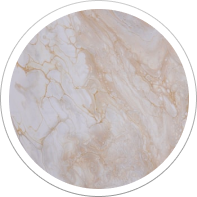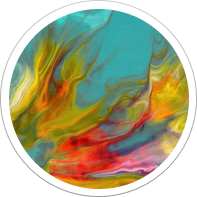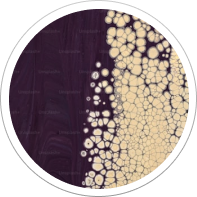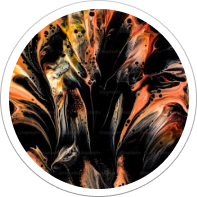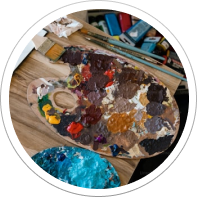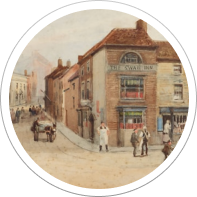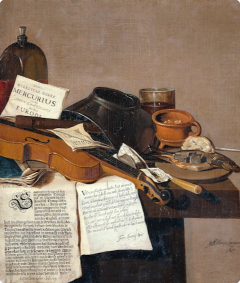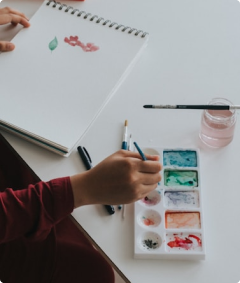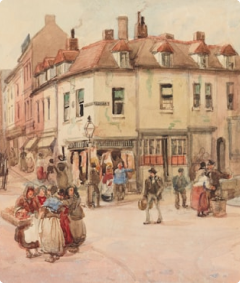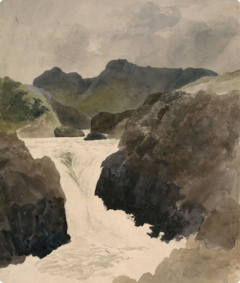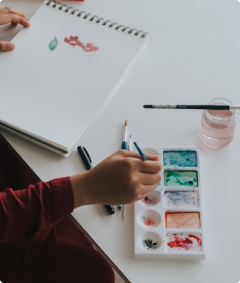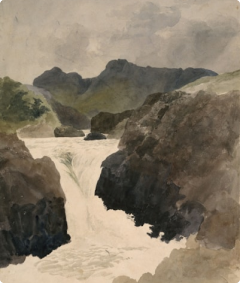
Top Seller
Canvas Prints & Photo Tiles, Wall Art from Jodello
Transform your space with Jodello’s canvas prints, photo tiles, and custom wall art. Turn memories and designs into stunning decor that reflects your unique style.
Get Started
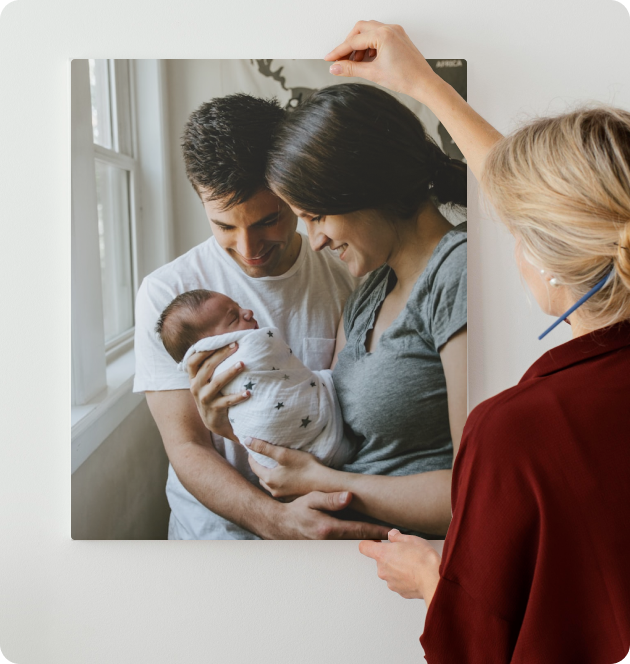






How It Works:
Transform your space with Jodello’s canvas prints, photo tiles, and custom wall art.

1. Add Photos
Upload your favorite moments.

2. We Deliver
Get your custom prints fast.

3. You Stick
Peel, stick, and transform your walls effortlessly.

Featured Categories
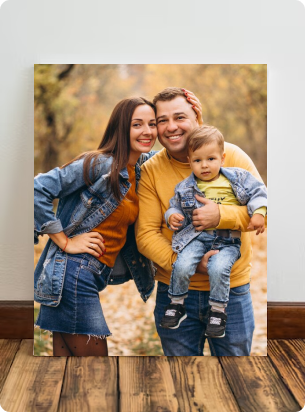
Your Cherished Moments, Beautifully Displayed
Transform your space with top-quality, customizable canvas prints. From cherished moments to stunning artwork, Jodello offers a seamless way to craft beautiful pieces that showcase your unique taste.
Get Started
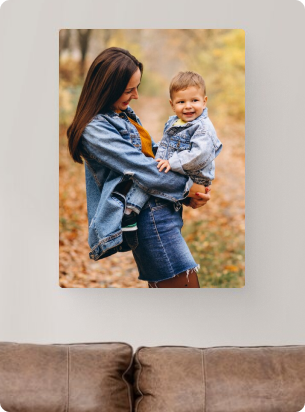
Why You'll Love Jodello

Seamless Installation
Easy-to-mount prints, no tools needed

No Damage, No Hassle
Sticks securely, removes cleanly

Endlessly Customizable
Designs that fit your style effortlessly
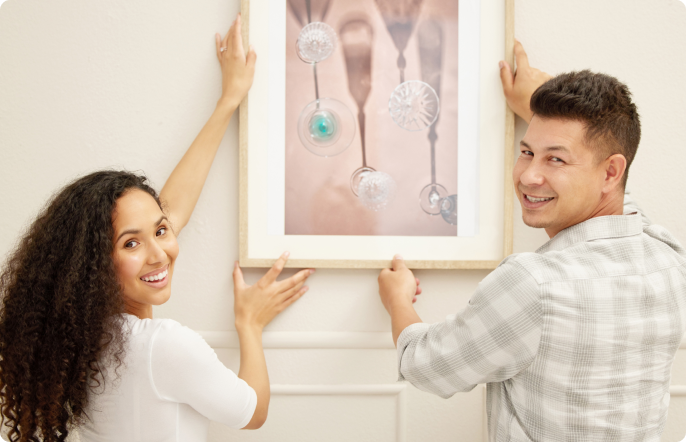
Customer Testimonials
Discover the conversations happening around our brand and see what our customers are saying about their experiences with us.
"I recently purchased a stunning canvas from Jodello, and I couldn't be happier with my choice! The vibrant colors and exquisite detail have truly transformed my living room. “


Liam Carter
"I recently purchased a stunning canvas from Jodello, and I couldn't be happier with my choice! The vibrant colors and exquisite detail have truly transformed my living room. “


Liam Carter
"I recently purchased a stunning canvas from Jodello, and I couldn't be happier with my choice! The vibrant colors and exquisite detail have truly transformed my living room. “


Liam Carter
FAQs
Easy-to-mount prints, no tools needed
Easy-to-mount prints, no tools needed
Easy-to-mount prints, no tools needed
Easy-to-mount prints, no tools needed
Easy-to-mount prints, no tools needed
Easy-to-mount prints, no tools needed
Easy-to-mount prints, no tools needed
Easy-to-mount prints, no tools needed
Transform Your Living Space with Wall Stick Photo Tiles For Wall and Removable Wall Displays
Creating stunning visual narratives throughout your home has never been more accessible or straightforward. The revolutionary approach to wall decoration eliminates traditional mounting challenges while providing exceptional flexibility for homeowners, renters, and decorating enthusiasts alike. These innovative display solutions represent a paradigm shift in how we approach interior design and personal expression through photographic memories.
The contemporary world demands versatility in home decoration, particularly for individuals who frequently relocate or prefer non-permanent modifications to their living environments. Traditional picture hanging methods often create irreversible damage to wall surfaces, requiring costly repairs and limiting creative freedom. Modern adhesive mounting systems address these concerns while offering unprecedented convenience and repositioning capabilities.
Professional photographers and casual image enthusiasts equally benefit from these versatile display mechanisms that showcase visual artistry without compromising structural integrity. The democratization of wall art through accessible mounting solutions empowers everyone to curate gallery-quality presentations within their personal spaces, regardless of technical expertise or available tools.
Revolutionary Mounting Methods for Modern Living Environments
The emergence of damage-free wall mounting represents a significant breakthrough in residential decoration strategies. These sophisticated adhesive systems utilize specialized bonding compounds that maintain exceptional holding strength while preserving wall surface integrity. Unlike conventional mounting hardware that penetrates surfaces and creates permanent alterations, these innovative solutions provide temporary yet reliable attachment mechanisms.
The scientific foundation underlying these mounting systems involves carefully engineered polymer compositions that create molecular bonds with various wall surface types. These formulations accommodate textured plaster, smooth painted surfaces, wallpapered areas, and even certain stone or tile applications. The versatility extends to different environmental conditions, maintaining adhesive properties across varying humidity levels and temperature fluctuations commonly encountered in residential settings.
Professional testing confirms these mounting systems support substantial weight loads while remaining completely removable without residue or surface damage. The repositioning capability allows for unlimited creative experimentation, enabling users to refine their display arrangements until achieving optimal visual impact. This flexibility proves particularly valuable for seasonal decoration changes, evolving personal tastes, or accommodating new acquisitions to existing collections.
Commercial establishments increasingly adopt these mounting solutions for rotating exhibitions, promotional displays, and temporary installations. The ease of modification supports dynamic presentation strategies that keep visual environments fresh and engaging. Educational institutions similarly benefit from the ability to update classroom displays frequently without maintenance concerns or administrative restrictions regarding wall modifications.
Comprehensive Size Selection and Spatial Planning Strategies
Effective visual presentation requires thoughtful consideration of proportional relationships between displayed images and surrounding architectural elements. The selection of appropriate dimensions directly impacts the overall aesthetic harmony and viewing experience within any given space. Understanding these relationships enables the creation of sophisticated displays that enhance rather than overwhelm existing room characteristics.
Square format presentations offer timeless appeal and exceptional versatility across diverse decorating schemes. The balanced proportions naturally complement contemporary furniture designs while providing sufficient visual weight to anchor wall compositions effectively. These formats particularly excel in creating grid-based arrangements that establish rhythm and visual continuity throughout connected living areas.
Rectangular orientations provide dynamic visual movement and accommodate diverse photographic compositions more naturally. Portrait orientations work exceptionally well for vertical wall spaces, while landscape formats complement horizontal furniture arrangements and architectural features. The strategic mixing of orientations creates engaging visual flow that guides viewer attention throughout the composition.
Scale relationships between individual elements and overall wall dimensions require careful consideration to achieve professional presentation quality. Oversized prints command attention and serve as focal points, while smaller formats work collaboratively to create comprehensive visual stories. The interaction between negative space and populated areas contributes significantly to the overall composition's success and viewing comfort.
Clustering strategies involve grouping related images to create visual impact zones that tell cohesive stories or establish thematic connections. These arrangements work particularly effectively in social areas where extended viewing and discussion naturally occur. The spacing between elements influences the perceived relationship strength and overall composition cohesion.
Creative Arrangement Techniques for Maximum Visual Impact
The artistry of wall composition extends far beyond simple photograph placement, encompassing sophisticated design principles that professional curators and interior designers employ to create compelling visual experiences. Understanding these foundational concepts empowers anyone to achieve gallery-quality presentations within their personal environments, regardless of previous design experience or artistic training.
Asymmetrical arrangements often produce more dynamic and visually interesting results than perfectly balanced compositions. The strategic placement of varying sizes and orientations creates movement and energy that engages viewers more effectively than static, symmetrical displays. This approach requires intuitive understanding of visual weight distribution, where larger elements balance multiple smaller components through strategic positioning.
Color harmony plays a crucial role in successful wall compositions, influencing both individual image selection and overall arrangement strategies. Photographs with complementary color palettes naturally work together to create cohesive presentations, while contrasting elements can provide dramatic focal points when used judiciously. The consideration of wall color, furniture tones, and lighting conditions contributes to the overall color story and viewing experience.
Temporal storytelling through chronological arrangements offers powerful emotional connections and narrative development. Wedding celebrations, family growth documentation, travel adventures, and personal achievement milestones benefit from sequential presentation that allows viewers to experience the progression of events and relationships. These arrangements work particularly well in hallways, staircases, and transitional spaces where movement facilitates story progression.
Thematic groupings based on subject matter, artistic style, or emotional tone create focused presentation areas that serve specific decorative purposes. Nature photography collections, architectural studies, portrait series, and abstract compositions each contribute unique atmospheric qualities to their surrounding environments. The strategic placement of these thematic areas supports overall room functionality and mood establishment.
Mixed media integration expands creative possibilities by incorporating complementary decorative elements alongside photographic displays. Vintage postcards, inspirational quotes, small mirrors, decorative objects, and artistic prints can enhance photographic presentations when thoughtfully integrated. The key lies in maintaining visual hierarchy while adding textural and dimensional interest to flat wall surfaces.
Versatile Room Applications and Functional Display Solutions
Living room environments benefit tremendously from carefully curated photographic displays that reflect inhabitant personalities while enhancing overall decorative schemes. The central gathering nature of these spaces makes them ideal locations for meaningful image presentations that spark conversation and create welcoming atmospheres. Strategic placement above seating areas, flanking entertainment centers, or highlighting architectural features maximizes visual impact while maintaining functional accessibility.
Bedroom spaces offer intimate opportunities for personal expression through carefully selected imagery that supports relaxation and positive emotional associations. The private nature of these environments allows for more personal or sentimental content while considering the restorative purpose of the space. Placement above headboards creates natural focal points, while dresser or vanity area displays provide daily inspiration during personal preparation routines.
Kitchen and dining areas present unique opportunities for lifestyle-themed displays that celebrate culinary adventures, family gatherings, and social connections. Food photography, market visits, cooking experiences, and celebratory meals create warm, inviting atmospheres that enhance the social function of these gathering spaces. The consideration of humidity, temperature fluctuations, and cleaning requirements influences both placement strategies and protective measures.
Bathroom spaces, despite their utilitarian primary function, offer surprising potential for creative photographic displays that transform mundane daily routines into more pleasant experiences. Moisture-resistant mounting solutions accommodate these challenging environments while providing opportunities for humor, inspiration, or artistic expression. Guest bathroom displays particularly benefit from conversation-starting imagery that reflects host personality and hospitality.
Home office environments require careful balance between professional presentation and personal motivation through meaningful imagery. The integration of inspirational photographs, achievement documentation, or calming natural scenes can significantly impact productivity and workplace satisfaction. The consideration of video call backgrounds and professional appearance requirements influences placement and content selection strategies.
Children's spaces demand special consideration for safety, developmental appropriateness, and evolving interests. The ability to easily update displays supports changing preferences and growing maturity levels without requiring major renovation efforts. Educational imagery, achievement celebrations, and creative artwork encourage personal development while maintaining age-appropriate visual environments.
Hallway and transitional spaces offer exceptional opportunities for storytelling through sequential arrangements that accompany movement throughout the home. These often-overlooked areas become gallery corridors that showcase family histories, travel adventures, or artistic collections. The linear nature of these spaces naturally supports chronological or thematic progressions that create engaging viewing experiences.
Effortless Repositioning and Seasonal Display Modifications
The transformative power of easily changeable displays cannot be overstated in creating dynamic living environments that evolve with personal preferences, seasonal celebrations, and life transitions. Traditional mounting methods severely limit modification possibilities, often requiring complete reinstallation processes that discourage regular updates and creative experimentation. Modern adhesive mounting systems eliminate these barriers while encouraging frequent refresh cycles that maintain visual interest and personal relevance.
Seasonal decoration strategies benefit enormously from repositionable display capabilities that accommodate changing color palettes, themes, and celebratory content throughout the year. Spring celebrations might feature vibrant garden photography and outdoor adventure documentation, while autumn displays could emphasize warm earth tones and harvest imagery. Winter presentations often gravitate toward cozy indoor scenes and holiday celebrations, creating atmospheric environments that support seasonal mood enhancement.
Anniversary and milestone celebrations provide natural opportunities for temporary display modifications that commemorate special occasions without requiring permanent changes to established decorative schemes. Wedding anniversaries, graduation achievements, new job celebrations, and family additions merit special recognition through dedicated display areas that can subsequently return to regular programming without complicated removal processes.
Rotating exhibition concepts borrowed from professional gallery practices create continuously engaging home environments that prevent visual stagnation. Monthly or quarterly rotation schedules ensure that extensive photograph collections receive appropriate display time while maintaining fresh visual experiences for inhabitants and visitors. This approach proves particularly valuable for photography enthusiasts with large archives of quality images deserving recognition.
Guest accommodation displays can be temporarily modified to reflect visitor interests, shared experiences, or welcoming messages that demonstrate thoughtful hospitality. The ability to quickly customize wall presentations for specific guests creates memorable experiences while showcasing the versatility and convenience of modern mounting solutions.
Travel documentation and adventure memories merit special display consideration given their powerful emotional connections and storytelling potential. The chronological presentation of journey highlights, cultural encounters, and natural wonders creates immersive experiences that transport viewers to distant locations and treasured moments. These displays prove particularly effective in social areas where shared storytelling and reminiscence naturally occur.
Professional Photography Display and Artistic Curation Principles
The presentation of professional photography requires sophisticated understanding of visual composition, lighting considerations, and spatial relationships that maximize artistic impact while respecting the photographer's creative intentions. Whether displaying personal work or carefully selected pieces from other artists, the mounting and arrangement decisions significantly influence viewer perception and appreciation of the artistic content.
Gallery lighting principles apply equally to residential photography displays, with strategic illumination enhancing color accuracy, contrast definition, and overall visual drama. Natural lighting changes throughout the day affect photographic presentations differently depending on orientation, window proximity, and seasonal variations. Understanding these interactions enables optimal placement decisions that showcase imagery under the most favorable viewing conditions.
Color temperature considerations become particularly important when displaying photography alongside various artificial lighting sources. Warm incandescent lighting enhances certain color palettes while potentially distorting others, while cool LED illumination provides more neutral presentation but may lack the warmth preferred in residential environments. The strategic use of accent lighting can compensate for these variables while creating dramatic presentation effects.
Professional matting and framing principles translate effectively to adhesive mounting systems, with border proportions, color selections, and finish choices significantly impacting the perceived quality and artistic merit of displayed work. The frame becomes an integral component of the artistic presentation rather than merely a protective or mounting device. Thoughtful frame selection enhances rather than competes with the photographic content.
Series presentation strategies enable comprehensive artistic statements that individual images cannot achieve independently. Sequential arrangements support narrative development, technical progressions, or thematic explorations that demonstrate artistic growth and creative vision. The spacing, alignment, and proportional relationships between series elements require careful consideration to maintain visual unity while allowing individual appreciation.
Curatorial rotation schedules prevent visual fatigue while ensuring extensive collections receive appropriate display opportunities. Professional photographers often accumulate substantial bodies of work that exceed available display space, necessitating strategic selection and rotation practices. These schedules can follow seasonal themes, technical exploration periods, or chronological progressions that maintain fresh visual experiences.
Innovative Home Design Integration and Aesthetic Enhancement Strategies
Contemporary interior design increasingly emphasizes personalization and authentic expression over generic decorative approaches, making photographic displays essential components of sophisticated residential environments. The integration of meaningful imagery supports emotional connection to living spaces while reflecting inhabitant personalities, experiences, and aspirations. These personal touches distinguish homes from mere functional structures, creating environments that nurture well-being and express individual identity.
Architectural feature enhancement through strategic photography placement can dramatically improve room proportions, highlight design elements, or create visual interest in otherwise plain areas. Columns, alcoves, built-in shelving, and unusual wall configurations offer unique opportunities for creative display solutions that work with rather than against existing structural characteristics. The careful consideration of these relationships produces integrated presentations that appear intentionally designed rather than arbitrarily placed.
Furniture relationship considerations ensure that photographic displays complement rather than compete with existing decorative elements and functional requirements. The interaction between display heights, furniture scales, and sight lines influences both aesthetic success and practical usability. Displays positioned too high become disconnected from living areas, while those placed too low may interfere with furniture function or appear cramped.
Traffic flow patterns within rooms affect both placement strategies and content selection for photographic displays. High-traffic areas benefit from engaging content that rewards brief viewing encounters, while contemplative spaces can accommodate more complex or detailed imagery that supports extended appreciation. Understanding these usage patterns enables strategic placement that maximizes positive impact while avoiding interference with daily activities.
Layered decorative approaches combine photographic displays with complementary decorative elements to create rich, textured environments that support multiple aesthetic goals simultaneously. The strategic integration of plants, books, decorative objects, and textile elements creates depth and visual interest while preventing photographic displays from appearing isolated or disconnected from overall room design.
Color psychology principles guide content selection and arrangement decisions that support desired atmospheric goals within different living areas. Energizing spaces benefit from vibrant, dynamic imagery that promotes activity and positive mood, while restful areas require more subdued, calming visual content that supports relaxation and stress reduction. The strategic application of these principles creates environments that actively support inhabitant well-being and lifestyle goals.
Financial Benefits and Long-Term Value Proposition
The monetary advantages of repositionable mounting systems transcend immediate cost considerations, encompassing a comprehensive spectrum of financial benefits that accumulate substantially over time. These innovative solutions fundamentally transform the traditional paradigm of display mounting by eliminating recurring expenses associated with conventional hardware-based approaches. Property owners consistently discover that investing in quality adhesive mounting solutions generates remarkable returns through reduced maintenance obligations, elimination of professional service requirements, and enhanced property preservation.
The elimination of professional installation services represents a significant cost reduction factor that many consumers initially overlook when evaluating mounting options. Traditional mounting approaches frequently necessitate skilled tradespeople for proper installation, particularly in challenging locations or when dealing with valuable artwork requiring precise positioning. Professional mounting services typically command premium pricing, especially for complex installations involving multiple pieces or specialized mounting requirements. Repositionable systems democratize the installation process, empowering property owners to achieve professional-quality results through intuitive mounting procedures that require minimal technical expertise.
Maintenance cost elimination extends beyond simple upfront savings to encompass ongoing expense reduction throughout the mounting system's operational lifespan. Conventional mounting hardware gradually deteriorates due to environmental factors, structural settling, and mechanical stress, eventually requiring replacement or repair interventions. These maintenance cycles generate recurring expenses that compound over years of ownership, particularly in commercial environments where display configurations change frequently. Modern adhesive solutions maintain their holding capacity and repositioning capabilities across thousands of mounting cycles without degradation or performance compromise.
Future modification flexibility provides substantial value for property owners who anticipate evolving display requirements or changing spatial configurations. Traditional mounting approaches create permanent alterations that become liabilities when modification needs arise. Property owners often discover that changing display arrangements requires extensive repair work to address existing mounting points while creating new ones in different locations. Repositionable systems eliminate these modification costs by enabling seamless transitions between different display configurations without surface damage or restoration requirements.
Professional service elimination represents a paradigm shift in mounting accessibility that particularly benefits photography enthusiasts and collectors with dynamic display needs. Traditional mounting often requires scheduling professional services for each modification, creating delays and expenses that discourage experimentation with display arrangements. Independent mounting capability enables immediate responses to creative inspiration, collection additions, or spatial reorganization needs without external scheduling constraints or service fees.
Property value preservation becomes increasingly important in competitive real estate markets where surface damage or unprofessional modifications can negatively impact selling potential. Traditional mounting holes, particularly when improperly executed or inadequately repaired, represent cosmetic issues that potential buyers frequently cite as concerning factors. Pristine surface conditions contribute to positive first impressions during property viewings and eliminate negotiation leverage that buyers might otherwise exploit to reduce offer prices.
Investment recovery opportunities emerge when property owners choose mounting solutions that support rather than compromise their valuable collections. Traditional mounting approaches occasionally result in frame damage, print stress, or hardware failure that necessitates costly repairs or replacements. Quality repositionable systems distribute mounting stress evenly while providing reliable support that protects valuable photographic investments from mounting-related damage.
Cost predictability represents another significant advantage of modern mounting solutions that enable accurate budgeting for display projects without unexpected expenses. Traditional mounting projects often encounter unforeseen complications such as unsuitable wall construction, hidden utilities, or structural limitations that require additional professional services or specialized hardware. Repositionable systems provide consistent installation experiences regardless of surface conditions or architectural variables, enabling accurate project cost estimation without contingency planning for mounting complications.
Environmental Responsibility and Ecological Impact
Environmental stewardship considerations increasingly influence consumer purchasing decisions as awareness of ecological impact grows among conscientious buyers who prioritize sustainable living practices. Repositionable mounting systems align perfectly with environmental responsibility objectives by dramatically reducing resource consumption, eliminating waste generation, and supporting circular economy principles through reusable mounting solutions that minimize ecological footprints across their operational lifespans.
Resource consumption reduction begins with the elimination of traditional mounting hardware that requires extensive manufacturing processes, raw material extraction, and energy-intensive production methods. Conventional mounting systems typically involve metal fabrication, plastic molding, and packaging materials that contribute significantly to environmental impact through their production cycles. Modern adhesive mounting solutions require substantially fewer raw materials while achieving superior performance characteristics through innovative polymer chemistry and precision manufacturing processes.
Manufacturing impact minimization extends beyond material consumption to encompass energy usage, transportation requirements, and packaging optimization. Traditional mounting hardware often involves complex supply chains with multiple manufacturing stages, metal processing facilities, and assembly operations that consume substantial energy resources. Streamlined adhesive mounting production requires fewer manufacturing steps while generating minimal waste byproducts through efficient polymer processing techniques that maximize material utilization.
Waste elimination represents perhaps the most significant environmental advantage of repositionable mounting systems that prevent substantial waste generation throughout their operational lifespans. Traditional mounting approaches generate considerable waste through packaging materials, failed installations, damaged hardware, and eventual disposal of worn components. Reusable mounting solutions eliminate these waste streams while providing extended service life that reduces replacement frequency and associated disposal requirements.
Transportation efficiency improvements result from reduced weight, compact packaging, and elimination of bulky hardware components that traditionally increase shipping requirements and associated carbon emissions. Adhesive mounting solutions typically require minimal packaging while achieving high density storage that reduces transportation frequency and associated environmental impact. These efficiency improvements compound across supply chain operations to generate substantial cumulative environmental benefits.
Circular economy principles find perfect expression in mounting solutions designed for indefinite reuse without performance degradation or material waste. Traditional mounting hardware follows linear consumption patterns where materials flow from production through use to disposal without recovery opportunities. Repositionable systems embody circular design principles by maintaining their utility across numerous mounting cycles while preserving their original performance characteristics indefinitely.
Surface preservation contributions to environmental sustainability extend beyond immediate mounting considerations to encompass long-term building maintenance requirements and associated resource consumption. Traditional mounting damage often necessitates repair materials, refinishing products, and professional services that consume additional resources while generating waste through restoration processes. Damage prevention eliminates these secondary environmental impacts while preserving original building materials and finishes.
Chemical impact considerations favor modern mounting solutions that utilize environmentally responsible adhesive formulations without harmful solvents, volatile organic compounds, or toxic constituents. Traditional mounting often involves adhesives, sealants, or finishing materials that release harmful chemicals into indoor environments while contributing to air quality degradation. Contemporary mounting systems prioritize environmental safety through careful chemical selection and formulation optimization that eliminates harmful emissions.
Property Preservation and Surface Protection
Property preservation represents a fundamental consideration for property owners who recognize that surface damage significantly impacts both property value and future flexibility for modifications or enhancements. Repositionable mounting systems provide comprehensive surface protection that maintains original building conditions while enabling sophisticated display capabilities that enhance rather than compromise property aesthetics and structural integrity.
Structural integrity preservation becomes particularly crucial when dealing with older buildings, historical properties, or structures with specialized construction materials that resist conventional mounting approaches. Traditional drilling and hardware installation can compromise structural elements, particularly in buildings with masonry construction, specialized wall systems, or architectural features that require preservation. Non-invasive mounting approaches respect structural integrity while providing reliable display support that accommodates even substantial artwork collections.
Surface finish protection extends beyond simple hole prevention to encompass comprehensive preservation of paint, wallpaper, plaster, and specialty surface treatments that represent significant investment in property aesthetics. Traditional mounting often damages surface finishes during installation, removal, or modification processes, necessitating costly restoration work that disrupts living environments while generating additional expenses. Gentle mounting approaches preserve surface conditions indefinitely while enabling unlimited display modifications without cumulative damage.
Rental property considerations become increasingly important as tenant populations grow and property owners seek mounting solutions that accommodate tenant needs without compromising property conditions. Rental agreements frequently prohibit permanent modifications, creating challenges for tenants who desire personalized living environments without violating lease terms. Property owners increasingly appreciate tenants who maintain pristine property conditions while creating attractive living spaces that enhance rather than compromise property appeal.
Historical building compatibility represents a specialized preservation requirement that traditional mounting approaches often cannot accommodate without compromising architectural integrity or violating preservation guidelines. Historic properties frequently feature construction materials, architectural details, or protective designations that prohibit conventional mounting approaches. Specialized mounting solutions enable appropriate display capabilities while respecting historical significance and preservation requirements that protect cultural heritage.
Architectural detail preservation becomes essential when dealing with properties featuring decorative elements, specialty finishes, or architectural significance that requires careful treatment during mounting projects. Traditional mounting approaches often compromise architectural details through inappropriate placement, inadequate support, or installation techniques that ignore architectural context. Thoughtful mounting solutions enhance architectural features while providing display capabilities that complement rather than compete with existing design elements.
Future modification flexibility proves invaluable for property owners who anticipate evolving needs, changing family situations, or eventual property transfers that require mounting system adaptation or removal. Traditional mounting creates permanent alterations that become obstacles during future modification projects, often requiring expensive repair work or complete refinishing to accommodate new requirements. Flexible mounting systems adapt seamlessly to changing needs while preserving options for future property owners or tenants.
Damage prevention strategies encompass comprehensive surface protection that addresses both immediate mounting requirements and long-term display needs across diverse property types and usage scenarios. Effective damage prevention requires understanding surface materials, environmental conditions, and display requirements to select mounting approaches that provide reliable support without compromising surface integrity. Preventive strategies prove far more cost-effective than remedial approaches that address damage after it occurs.
Creative Flexibility and Artistic Expression
Creative flexibility represents perhaps the most compelling advantage of modern mounting systems that liberate artistic expression from traditional constraints while enabling unprecedented experimentation with display arrangements, seasonal modifications, and evolving aesthetic preferences. Photography enthusiasts and collectors increasingly recognize that display flexibility directly correlates with creative growth and artistic development through unrestricted exploration of visual presentation possibilities.
Experimentation encouragement emerges naturally from mounting systems that eliminate commitment anxiety associated with permanent installations. Traditional mounting approaches discourage experimentation due to surface damage concerns, modification expenses, and time-intensive reconfiguration requirements that inhibit creative exploration. Repositionable systems actively encourage experimentation by removing these barriers while providing immediate feedback on compositional choices, spatial relationships, and aesthetic effectiveness.
Compositional exploration opportunities expand dramatically when mounting constraints no longer limit creative decision-making processes. Photography displays benefit enormously from spatial flexibility that enables testing different heights, groupings, and arrangement patterns to identify optimal compositional relationships. The ability to iterate rapidly through multiple arrangement possibilities without consequence enables sophisticated compositional development that would be prohibitively expensive using traditional mounting approaches.
Seasonal adaptation capabilities enable dynamic display strategies that respond to changing light conditions, seasonal aesthetics, and evolving personal preferences throughout the year. Photography collections often benefit from seasonal rotation that highlights different aspects of artistic vision while maintaining visual interest through periodic refreshment. Flexible mounting systems support these adaptation strategies without generating additional costs or complications associated with repeated remounting activities.
Collection growth accommodation represents a crucial consideration for photography enthusiasts whose collections expand continuously through ongoing creative work and acquisition activities. Traditional mounting approaches become increasingly problematic as collections grow because existing arrangements require modification to accommodate new pieces. Flexible systems seamlessly integrate new additions while enabling complete reorganization to maintain optimal aesthetic balance and visual impact.
Artistic development support proves invaluable for photographers who view their displays as dynamic reflections of evolving artistic vision rather than static decorative installations. Creative growth often requires reassessment of existing work, identification of thematic connections, and exploration of new presentation strategies that reflect developing aesthetic sensibilities. Mounting flexibility enables these evolutionary processes without financial or practical barriers that might otherwise limit artistic development.
Collaborative arrangement possibilities emerge when multiple household members contribute to display decisions or when temporary exhibitions require community input and modification. Traditional mounting systems discourage collaborative approaches due to complexity and permanence concerns that make group decision-making difficult to implement. Flexible systems enable collaborative experimentation that incorporates diverse perspectives while maintaining the possibility of easy modification based on group consensus.
Thematic organization flexibility supports sophisticated display strategies that group artwork according to conceptual themes, stylistic approaches, chronological periods, or emotional content. Photography collections often benefit from thematic organization that creates narrative continuity while enabling viewers to appreciate artistic development and conceptual connections. Repositionable mounting enables effortless thematic reorganization as collections grow and thematic understanding develops.
Investment Protection and Collection Security
Investment protection considerations become increasingly important as photography collections grow in both monetary value and personal significance, requiring mounting solutions that preserve rather than compromise valuable pieces while providing security against environmental threats and handling damage. Modern mounting systems prioritize investment protection through gentle support mechanisms, environmental isolation, and handling minimization that collectively preserve collection value indefinitely.
Frame preservation represents a primary concern for valuable photography where frame damage significantly reduces both aesthetic appeal and monetary value. Traditional mounting approaches often stress frame corners, create pressure points, or introduce mechanical forces that gradually damage frame integrity over time. Sophisticated mounting systems distribute support forces evenly while eliminating stress concentrations that could compromise frame stability or structural integrity.
Print protection encompasses comprehensive preservation strategies that address environmental threats, handling damage, and mounting stress that could compromise photographic materials over time. Valuable prints require mounting approaches that minimize direct contact while providing stable support that prevents movement, vibration, or environmental exposure. Quality mounting systems incorporate protective features that isolate prints from wall conditions while maintaining optimal viewing angles and lighting exposure.
Hardware longevity considerations ensure that mounting investments remain viable across extended timeframes without degradation or performance compromise that could jeopardize valuable collections. Inferior mounting solutions often fail gradually, creating situations where valuable artwork becomes inadequately supported without obvious warning signs. Premium mounting systems maintain their performance characteristics indefinitely while providing consistent support reliability that protects valuable investments.
Environmental isolation capabilities protect valuable collections from wall-related environmental threats such as moisture intrusion, temperature fluctuations, or chemical contamination that could compromise photographic materials. Traditional mounting often creates direct contact between artwork and wall surfaces that can transmit environmental threats or contamination. Sophisticated mounting systems provide environmental barriers that isolate collections from potential wall-related threats while maintaining optimal display conditions.
Security enhancement features address theft prevention, accidental displacement, and unauthorized handling that could compromise valuable collections in both residential and commercial environments. Effective mounting systems provide secure attachment that resists casual tampering while maintaining legitimate removal capabilities for authorized modifications. These security features prove particularly important for valuable collections displayed in accessible locations or properties with multiple occupants.
Handling minimization strategies reduce collection exposure to damage through mounting systems that eliminate frequent handling requirements associated with display modifications or maintenance activities. Valuable photography benefits from mounting approaches that provide stable, long-term support without requiring regular adjustment, repositioning, or maintenance handling that increases damage risk. Sophisticated systems enable display modifications without direct artwork handling through innovative mounting mechanisms.
Collection documentation support enables systematic tracking of mounting configurations, display histories, and environmental conditions that contribute to professional collection management practices. Serious collectors benefit from mounting systems that support documentation requirements while enabling systematic organization and tracking of display arrangements. These capabilities prove particularly valuable for insurance purposes, estate planning, or eventual collection transfer considerations.
Technological Innovation and Material Science
Technological advancement in adhesive chemistry has revolutionized mounting capabilities through breakthrough developments in polymer science, surface interaction mechanisms, and performance optimization that enable unprecedented mounting performance without traditional hardware requirements. Contemporary mounting solutions incorporate cutting-edge materials research that addresses historical limitations while providing enhanced capabilities that surpass conventional mounting approaches across multiple performance dimensions.
Polymer engineering breakthroughs enable adhesive formulations that maintain strong adhesion while providing clean removal capabilities that preserve surface integrity indefinitely. Traditional adhesives typically compromise between holding strength and removability, often failing to provide adequate performance in both categories. Modern polymer chemistry achieves optimal performance in both areas through sophisticated molecular engineering that creates reversible adhesion mechanisms without permanent surface bonding.
Surface interaction science has advanced significantly through research into molecular-level adhesion mechanisms that optimize bonding without chemical alteration of mounting surfaces. Understanding surface energy, molecular attraction, and interfacial chemistry enables adhesive development that maximizes holding capacity while maintaining surface reversibility. These scientific advances translate directly into mounting solutions that provide exceptional performance without traditional adhesive limitations.
Performance durability research addresses long-term reliability concerns that historically limited adhesive mounting applications to temporary or light-duty uses. Contemporary formulations undergo extensive testing protocols that evaluate performance across extreme temperature ranges, humidity variations, and mechanical stress conditions that exceed typical residential environments. These rigorous testing standards ensure mounting performance reliability that exceeds traditional hardware expectations across diverse environmental conditions.
Material compatibility expansion enables mounting solutions that accommodate diverse surface types, environmental conditions, and display requirements without specialized products or complex selection processes. Universal compatibility represents a significant advancement over traditional adhesives that required specific formulations for different surface materials. Contemporary mounting systems provide consistent performance across painted surfaces, wallpaper, wood, metal, and specialty finishes without modification or supplementary products.
Innovation sustainability drives continuous improvement in mounting solutions through ongoing research into environmental responsibility, performance enhancement, and user experience optimization. Leading manufacturers invest substantially in research programs that address emerging needs while maintaining environmental responsibility through sustainable chemistry and production processes. These innovation commitments ensure that mounting solutions continue improving while addressing evolving consumer requirements and environmental considerations.
Quality assurance protocols ensure mounting solutions meet rigorous performance standards through comprehensive testing programs that evaluate holding capacity, removal characteristics, and environmental resistance across diverse conditions. Professional testing facilities simulate years of environmental exposure, mechanical stress, and usage patterns to verify performance claims and identify potential limitations before market introduction. These quality standards provide consumers with confidence in mounting performance across extended operational periods.
Manufacturing precision enables consistent product performance through sophisticated production controls that eliminate variability and ensure uniform quality across large production volumes. Precision manufacturing processes control adhesive thickness, composition uniformity, and application characteristics that directly impact mounting performance. Consistent manufacturing quality translates into predictable mounting performance that enables confident application across diverse display projects.
Installation Excellence and User Experience
Installation excellence encompasses comprehensive strategies for achieving optimal mounting results through systematic approaches that address surface preparation, positioning accuracy, and performance optimization while eliminating common installation challenges that compromise mounting effectiveness. Successful mounting requires understanding both technical requirements and aesthetic considerations that contribute to professional-quality results regardless of user experience level.
Surface preparation fundamentals establish the foundation for mounting success through cleaning protocols, condition assessment, and preparation techniques that optimize adhesive performance while identifying potential challenges before installation begins. Proper surface preparation significantly influences mounting longevity and removal characteristics, making thorough preparation essential for achieving optimal results. Effective preparation involves removing contaminants, assessing surface texture, and ensuring optimal environmental conditions for adhesive application.
Positioning accuracy techniques ensure precise artwork placement through measurement strategies, alignment methods, and positioning aids that eliminate guesswork while enabling professional-quality results. Accurate positioning becomes particularly important for multi-piece displays where relative alignment directly impacts overall aesthetic effectiveness. Systematic positioning approaches prevent costly mistakes while enabling confident installation of complex display arrangements.
Environmental condition optimization addresses temperature, humidity, and atmospheric factors that influence mounting performance during installation and subsequent operational periods. Adhesive performance varies significantly with environmental conditions, making condition optimization essential for achieving maximum holding capacity and optimal removal characteristics. Understanding environmental influences enables strategic timing of installation activities to maximize mounting success.
Tool utilization strategies identify essential tools and accessories that facilitate professional-quality installation while eliminating common installation challenges and user frustrations. Effective mounting requires appropriate tools for surface preparation, measurement, positioning, and application pressure that ensure optimal adhesive contact and performance. Proper tool selection and utilization techniques significantly improve installation outcomes while reducing installation time and effort requirements.
Quality verification procedures enable systematic assessment of mounting performance immediately following installation to identify potential issues before they compromise display security or artwork safety. Effective verification involves testing holding capacity, evaluating adhesive contact, and confirming proper positioning before considering installation complete. Systematic verification prevents mounting failures while ensuring optimal performance across extended operational periods.
Troubleshooting strategies address common installation challenges through systematic problem-solving approaches that identify root causes while implementing effective solutions. Installation challenges often result from inadequate surface preparation, inappropriate environmental conditions, or improper application techniques that compromise mounting performance. Understanding common challenges and their solutions enables confident problem resolution without mounting failure or artwork damage.
Performance monitoring techniques enable ongoing assessment of mounting effectiveness through systematic observation and periodic evaluation that identifies potential issues before they compromise display security. Effective monitoring involves regular visual inspection, periodic stress testing, and environmental assessment that ensures continued mounting performance across changing conditions. Proactive monitoring prevents mounting failures while extending operational life through early intervention when necessary.
Display Arrangement Strategies and Aesthetic Principles
Display arrangement strategies encompass sophisticated approaches to visual presentation that maximize aesthetic impact while creating engaging viewing experiences through thoughtful consideration of spatial relationships, compositional principles, and viewer interaction patterns. Effective display arrangement transcends simple wall coverage to create compelling visual narratives that enhance both individual artwork appreciation and overall environmental aesthetics.
Spatial relationship principles govern the interaction between displayed pieces, surrounding architecture, and viewing perspectives to create harmonious compositions that guide viewer attention while maintaining visual balance. Understanding spatial relationships enables strategic placement decisions that enhance individual piece impact while contributing to cohesive overall presentations. Effective spatial planning considers viewing distances, lighting conditions, and architectural context to optimize aesthetic effectiveness.
Compositional balance techniques ensure visual harmony through strategic distribution of visual weight, color relationships, and scale variations that create engaging compositions without overwhelming individual pieces or viewers. Balanced compositions guide viewer attention systematically while maintaining interest through controlled variety and strategic emphasis. Compositional principles borrowed from photography and graphic design translate effectively to display arrangement applications.
Lighting interaction considerations optimize display effectiveness through strategic placement that maximizes favorable lighting while minimizing harmful exposure that could damage photographic materials over time. Natural lighting varies throughout daily and seasonal cycles, requiring display arrangements that accommodate changing conditions while maintaining optimal viewing characteristics. Artificial lighting integration enables enhanced display effectiveness while providing consistent illumination that supports extended viewing sessions.
Viewing perspective optimization ensures display effectiveness across diverse viewing positions and distances that reflect actual usage patterns in residential and commercial environments. Effective displays accommodate both intimate viewing experiences and distant appreciation while maintaining compositional integrity across different perspectives. Strategic height selection, angle optimization, and spacing decisions contribute significantly to viewing experience quality.
Color harmony strategies coordinate displayed artwork with surrounding environmental colors to create cohesive aesthetic experiences that enhance both artwork appreciation and overall environmental appeal. Color relationships between artwork, wall surfaces, and surrounding furnishings significantly influence aesthetic effectiveness and viewer response. Understanding color theory enables strategic selection and arrangement decisions that maximize aesthetic impact while maintaining environmental harmony.
Scale progression techniques utilize size relationships between displayed pieces to create visual rhythm and movement that guides viewer attention while maintaining compositional interest. Effective scale progression prevents monotony while establishing visual hierarchy that emphasizes significant pieces without overwhelming supporting elements. Strategic scale variation creates dynamic compositions that reward extended viewing while maintaining immediate visual appeal.
Thematic coherence strategies organize displays according to conceptual themes, stylistic approaches, or narrative content that creates meaningful viewing experiences beyond simple aesthetic appreciation. Thematic organization enables deeper engagement with photographic collections while providing educational opportunities and artistic insights that enhance viewer understanding and appreciation. Coherent thematic approaches transform displays from decorative elements into meaningful artistic statements.
Specialized Applications and Professional Usage
Specialized applications demonstrate the versatility and professional capability of modern mounting systems across diverse industries, institutional settings, and commercial environments where traditional mounting approaches prove inadequate for meeting specific performance requirements, aesthetic standards, or operational constraints. Professional usage scenarios reveal the full potential of repositionable mounting systems through demanding applications that require exceptional reliability, flexibility, and performance consistency.
Commercial gallery applications require mounting solutions that accommodate frequent exhibition changes, valuable artwork protection, and professional presentation standards while maintaining cost effectiveness across numerous installation cycles. Gallery environments demand mounting systems that provide museum-quality support while enabling rapid exhibition transitions without surface damage or installation delays. Professional galleries increasingly adopt repositionable systems for temporary exhibitions that require sophisticated presentation capabilities without permanent installation commitments.
Corporate environment mounting addresses unique challenges in office buildings, conference facilities, and professional spaces where display requirements change frequently while maintaining professional aesthetics and building preservation requirements. Corporate installations often involve temporary displays, rotating exhibitions, or seasonal modifications that require mounting flexibility without compromising professional appearance standards. Business environments benefit significantly from mounting solutions that enable staff-level installation and modification capabilities without professional service requirements.
Educational institution needs encompass diverse mounting requirements in classrooms, galleries, student housing, and administrative facilities where display flexibility supports educational objectives while accommodating limited maintenance budgets and frequent modifications. Educational environments require mounting solutions that enable student and faculty installation while withstanding heavy usage patterns and providing reliable performance across academic calendars. Institutional mounting often involves temporary displays, student exhibitions, and educational materials that require frequent modification capabilities.
Healthcare facility requirements address specialized mounting needs in medical environments where hygiene considerations, patient safety, and regulatory compliance create unique mounting challenges that traditional approaches cannot adequately address. Healthcare mounting must accommodate cleaning protocols, safety requirements, and frequent modifications while maintaining professional appearance standards and regulatory compliance. Specialized mounting solutions enable appropriate display capabilities while meeting stringent healthcare industry requirements.
Hospitality industry applications encompass hotels, restaurants, and entertainment venues where aesthetic appeal, frequent modifications, and maintenance efficiency directly impact business success and customer satisfaction. Hospitality environments require mounting solutions that enable rapid aesthetic updates, seasonal modifications, and damage prevention that protects property investments while maintaining attractive guest experiences. Professional hospitality mounting often involves large-scale installations that require efficient modification capabilities without service disruptions.
Residential accommodation scenarios include apartments, condominiums, and housing communities where tenant needs must balance with property preservation requirements and maintenance efficiency considerations. Residential mounting increasingly requires solutions that satisfy tenant desires for personalization while maintaining property conditions and enabling seamless transitions between occupants. Property managers particularly value mounting approaches that eliminate repair requirements between tenancies while enabling attractive personalization options.
Museum and exhibition standards represent the highest performance tier for mounting applications where artwork value, presentation quality, and preservation requirements demand exceptional mounting performance without compromise. Museum-quality mounting must provide archival support, environmental protection, and presentation excellence while enabling exhibition modifications and collection management activities. Professional mounting systems increasingly incorporate museum-quality features while maintaining practical usability for non-institutional applications.
Market Evolution and Consumer Trends
Market evolution reflects fundamental shifts in consumer priorities toward sustainability, flexibility, and user empowerment that drive demand for mounting solutions aligned with contemporary lifestyle values and environmental consciousness. Understanding market trends enables informed decision-making while anticipating future developments that influence mounting solution selection and long-term satisfaction with display strategies.
Consumer preference shifts demonstrate growing appreciation for products that combine environmental responsibility with superior performance characteristics while enabling user independence and creative flexibility. Contemporary consumers increasingly prioritize purchases that align with personal values while providing practical advantages over traditional alternatives. This preference evolution drives continuous innovation in mounting solutions that address emerging consumer priorities while exceeding performance expectations.
Lifestyle accommodation trends reflect changing living patterns, increased mobility, and evolving aesthetic preferences that require mounting solutions capable of adapting to dynamic personal circumstances. Modern lifestyles often involve frequent relocations, changing family situations, and evolving aesthetic preferences that traditional mounting approaches cannot accommodate effectively. Flexible mounting solutions align perfectly with contemporary lifestyle patterns while providing stability and reliability despite changing circumstances.
Sustainability awareness growth influences purchasing decisions across numerous product categories as consumers increasingly recognize the cumulative impact of individual choices on environmental conditions. Mounting solutions represent opportunities for meaningful environmental contribution through reduced resource consumption, waste elimination, and sustainable usage patterns. Environmental consciousness drives demand for mounting approaches that deliver superior performance while minimizing ecological impact.
DIY culture expansion reflects growing consumer confidence in independent project completion and desire for immediate gratification without professional service dependencies. Contemporary consumers increasingly prefer products that enable independent achievement of professional-quality results through intuitive design and comprehensive user support. DIY-friendly mounting solutions satisfy this preference while providing cost savings and immediate availability that professional services cannot match.
Rental market growth creates expanding demand for mounting solutions that accommodate tenant needs without violating lease agreements or compromising property conditions. Growing rental populations require mounting approaches that enable personalization and aesthetic enhancement without permanent modifications that could jeopardize security deposits or lease compliance. Flexible mounting solutions perfectly address rental market needs while providing property preservation benefits for property owners.
Value consciousness trends demonstrate consumer sophistication in evaluating total cost of ownership rather than simple initial purchase prices when making mounting decisions. Informed consumers increasingly recognize that premium mounting solutions often provide superior long-term value through elimination of ongoing costs, enhanced performance, and extended operational life. Value-conscious purchasing favors mounting approaches that provide comprehensive benefits rather than simple cost minimization.
Quality expectation elevation reflects growing consumer familiarity with premium products and services that establish higher performance standards across all product categories. Contemporary consumers expect mounting solutions that provide exceptional performance, aesthetic excellence, and user experience quality that matches premium standards in other product categories. These elevated expectations drive continuous improvement in mounting solution design and performance capabilities.
Future Considerations and Emerging Possibilities
Future considerations encompass emerging trends, technological developments, and evolving consumer needs that will influence mounting solution evolution while creating new opportunities for enhanced display capabilities, environmental responsibility, and user experience optimization. Understanding future trends enables strategic decision-making that anticipates rather than merely responds to changing requirements and opportunities.
Smart home integration possibilities emerge as connected devices become ubiquitous and consumers seek mounting solutions that complement rather than conflict with technological home enhancements. Future mounting systems may incorporate sensors, connectivity features, or integration capabilities that enhance display management while providing usage analytics and optimization recommendations. Smart integration could enable automatic display rotation, environmental monitoring, or security features that enhance both convenience and collection protection.
Augmented reality potential creates fascinating possibilities for enhanced display experiences through digital overlay capabilities that provide additional information, alternative viewing options, or interactive features that complement physical displays. AR integration could enable virtual display modification, historical information overlay, or artistic technique explanation that enhances viewer engagement and educational value. These possibilities require mounting systems that accommodate technological integration without compromising core mounting performance.
Sustainability advancement continues driving innovation in mounting materials, production processes, and end-of-life management that further reduces environmental impact while maintaining or enhancing performance capabilities. Future sustainability improvements may include biodegradable components, closed-loop manufacturing processes, or enhanced recyclability that supports circular economy principles. Sustainability advancement ensures mounting solutions remain aligned with evolving environmental consciousness.
The Material Renaissance in Mounting Solutions
Mounting systems are undergoing a quiet revolution fueled by the evolution of polymer chemistry, interface engineering, and adhesive design. No longer confined to simple hooks or generic tapes, modern mounting elements incorporate precision molecular architecture that directly responds to user needs, structural demands, and environmental pressures. As material scientists push boundaries in molecular cohesion and surface responsiveness, mounting solutions achieve higher load-bearing thresholds, wider compatibility with diverse substrates, and unparalleled resistance to stressors such as moisture, temperature variation, and UV exposure.
New compounds exhibiting dynamic surface energy allow adhesives to bond aggressively yet cleanly detach when required, enabling reusability without compromising grip. These smart materials can mimic gecko-like adhesion or self-adjust to environmental moisture levels, maintaining performance across climates. Innovations in elastomer behavior, thermoset responsiveness, and cross-linked polymer chains ensure that next-generation mounts outperform outdated analogs, transforming both user convenience and structural reliability. As these refined materials enter mainstream usage, the very perception of what a mounting solution can do begins to shift.
Evolution of Mounting Dynamics Through Scientific Precision
Science-backed refinements in mounting performance are not simply based on strength but on equilibrium—balancing holding force, residue-free removal, and environmental versatility. Traditional adhesives often suffered from brittleness, poor substrate compatibility, or degradation under stress. The modern wave of mounting materials now targets longevity, molecular resilience, and adaptability to ever-evolving user scenarios.
For instance, hybrid adhesives can now combine the elasticity of silicones with the tenacity of epoxy-like bonds, offering high-performance adhesion without the rigidity of older systems. These hybrids also demonstrate a tolerance for micro-movements, ideal for uneven or mobile surfaces. Furthermore, materials with phase-changing capacities—substances that shift properties under temperature or pressure—are being integrated into mounting designs to create responsive, adaptive bonding.
Substrate specificity is another frontier. Whereas prior mounting solutions adhered differently depending on surface energy (e.g., glass vs. painted drywall), the newer formulations self-calibrate their bond strength by sensing surface composition. This ensures uniform grip, regardless of texture or finish, while reducing damage during removal. Mounting science, then, is becoming not just stronger—but smarter.
Aesthetic Adaptation and Structural Elegance
Today’s mounting expectations no longer rest solely on function. Visual harmony, minimalism, and clean integration into various design aesthetics play a significant role in determining adoption. Contemporary users seek mounts that are discreet yet secure, invisible yet impactful. As such, color matching, surface finish replication, and transparency control are integral components of modern solutions.
Clear, optically stable adhesives allow glass-on-glass mounting that virtually disappears, while ultra-thin substrates maintain flatness without warping. Fabric-friendly mounts integrate with woven or textured materials without fraying or imprinting, giving designers unprecedented freedom in spatial arrangement. These refinements serve not just visual aesthetics, but also preservation concerns—especially in gallery, archival, or restoration settings where material integrity must not be compromised.
Sophistication in mounting configurations also enables modularity. Interlocking systems or slide-based supports allow rapid rearrangement without wear or residual strain. This is crucial in environments where frequent repositioning is required—exhibitions, temporary displays, or high-dynamic-use areas. Mounting is no longer merely about sticking; it’s about articulating design with precision and style.
Expanding Horizons in Niche and Industrial Contexts
As awareness grows about the evolving landscape of mounting tools, non-traditional sectors are beginning to explore their potential. The fusion of flexibility and strength in newer adhesives makes them suitable for sensitive environments such as cleanrooms, sterile labs, or semiconductor production floors, where conventional methods fail to meet precision or contamination requirements.
Heavy-industry and field deployment scenarios—such as construction monitoring or tactical operations—demand solutions that can adhere to rough, shifting, or particulate-covered surfaces. Specialized mounts are now being produced with textured adhesives, vibration dampening features, and self-sealing barriers that protect against dirt, humidity, and chemical intrusion.
Artistic and creative industries are also embracing the new wave of mounting sophistication. From museum-grade archival holders to experimental installation supports that interact with sound or motion, the spectrum of use cases has broadened dramatically. These multifaceted use environments underscore how dynamic modern mounting science has become—evolving not just for durability, but for interaction and adaptability.
Enhanced Longevity and Adaptable Application Protocols
Performance trajectories in the mounting world now consider long-term usability, environmental degradation, and user simplification as parallel goals. New adhesive chemistries are rated for extended life cycles, withstanding decades of wear without losing integrity. Whether exposed to sunlight, indoor climate fluctuations, or chemical exposure, these new solutions maintain their structural properties.
Additionally, the procedures surrounding use are being rethought. Previously, application required precision timing or expert knowledge; now, mounts include visual cues (such as color shift indicators), tactile feedback zones, and temperature-adaptive surfaces that simplify alignment and placement. The user experience has been re-engineered not just to facilitate setup, but also to reduce post-installation corrections and errors.
Mounts are also being adapted to include expiration diagnostics, ensuring expired adhesives are not mistakenly deployed in sensitive environments. Some units even feature pressure-sensitive microstructures that calibrate bond strength in real time. As these features become more common, user trust and accessibility improve, democratizing quality mounting across user groups.
Tailored Solutions for Distinctive Display Scenarios
Mounting challenges often arise in atypical or constrained environments where spatial restrictions, material incompatibilities, or specific safety concerns inhibit the use of standard methods. Recent material evolution now supports solutions that conform to extreme curvatures, bond securely to thermally dynamic surfaces, or hold firm on porous substrates like stone or untreated wood.
Specialty mounts are being produced for high-humidity zones, such as spas or aquariums, where conventional adhesives would degrade quickly. Likewise, fire-resistant bonding materials are being implemented in public venues requiring flame-retardant certifications. Even high-altitude or marine environments, previously considered hostile to traditional bonding, are finding solutions in chemically stabilized mounting compositions.
For sensitive displays—such as antique paper, textile relics, or fragile ceramics—non-migratory adhesives that release no volatiles are now available, ensuring zero discoloration or long-term degradation. Where aesthetics are paramount, magnetically assisted mounts, static-cling supports, or pressure-distribution pads deliver invisible grip without compromising beauty or structure.
These specialized designs empower users across disciplines—from designers and conservators to engineers and curators—to approach their unique mounting puzzles with tailored precision.
Breaking Boundaries: A New Epoch in Mounting Innovation
As scientific inquiry continues to evolve, so too does the realm of mounting solutions. Gone are the days when adhesives were constrained by simple chemistry and limited mechanical grip. The modern era introduces materials that defy gravity, mimic nature, and respond autonomously to environmental cues. The trajectory of mounting capabilities has shifted from static fixes to dynamic instruments—components that not only secure objects but interact intelligently with surfaces, weights, and climates.
Research now delves into exotic areas like micro-surface engineering, sensory-responsive substrates, and non-chemical adherence inspired by the natural world. These innovations are not incremental tweaks—they represent a foundational reshaping of how objects are secured, displayed, supported, and suspended in space. Such an evolution promises more than just functional refinement—it brings forth an entirely new philosophy around how we manipulate, organize, and preserve spatial design.
Biomimicry in Adhesion: Nature’s Blueprint for the Future
One of the most profound revolutions in this field stems from nature itself. Engineers and material scientists have turned to biology for guidance—studying creatures like geckos, beetles, and cephalopods, whose limb structures exhibit astonishing grip abilities across wet, dry, and vertical surfaces.
Unlike traditional adhesives that rely on chemical bonds or mechanical hooks, bio-inspired materials often use van der Waals forces or capillary action to hold onto surfaces without residue, deformation, or decay. These are not speculative concepts; prototypes exist today that can repeatedly stick and release using millions of microscopic hair-like structures, much like those found on a gecko's toe pad.
Such materials offer unmatched reusability, flexibility, and surface compatibility. They perform equally well on glass, metal, and rough natural stone, creating a mounting system that can be employed across unpredictable environments. As this science matures, we move closer to mounts that are both ultra-reliable and entirely damage-free—a true paradigm shift for industries that demand reversibility, such as art preservation, medical device design, and aerospace assembly.
Molecular Engineering and Surface Microstructure Innovation
The next frontier is being carved at the microscopic scale. Mounting systems are increasingly defined not by bulk material but by the invisible architecture at the molecular level. Nanostructured bonding agents are being engineered to embed themselves into surfaces with atomic precision—forming bonds that rival welded joints, yet remain cleanly removable under specific stimuli like heat, light, or magnetism.
Such microscopic bonding strategies minimize material usage while maximizing performance. They also allow mounts to be virtually invisible, contributing to sleek design trends that favor minimalism and surface purity. Imagine displays where the mounting system leaves no visible trace, no bump, no discoloration—just seamless cohesion between object and background.
Additionally, research is uncovering new pathways to create “frictionless mounting”—systems that slide freely until activated, then lock rigidly into place. This paves the way for modular designs where mounted objects can be adjusted in real time with minimal force, and yet remain entirely secure once positioned.
Stimuli-Responsive and Shape-Shifting Adhesive Surfaces
Traditional mounts behave the same regardless of time or condition. Future iterations, however, are being designed to shift shape, texture, or bond strength based on the surrounding environment. These “phase-responsive” materials can react to changes in temperature, humidity, weight load, or light exposure.
For instance, a wall mount may tighten its grip in a humid environment to offset potential slippage or expand its surface area under increased weight. Some experimental models involve thermal softening elements that activate at specific temperatures, allowing for controlled release during removal. Others change texture to create more contact points under physical strain—thus strengthening the grip when it matters most.
This evolution opens up unprecedented flexibility in both consumer and industrial settings. Mounts could potentially self-tighten for safety under vibration or adapt instantly to shifting angles in transport scenarios. It's a future where the bond between object and surface is dynamic, interactive, and uniquely suited to real-time demands.
Regenerative, Recyclable, and Zero-Waste Bonding Mechanisms
Sustainability, once an afterthought, is now central to all material innovation. Mounting systems of the future are being crafted with full life cycles in mind—from responsible sourcing to end-of-use recyclability. Regenerative adhesives, capable of self-healing micro-cracks or bonding defects, are being developed to extend the usable lifespan of materials and reduce waste.
These self-repairing materials operate by internally reassembling molecular chains after damage, effectively “sealing” breaks without external input. This not only reduces the need for frequent replacements but also adds an unprecedented level of resilience in harsh environments. Consider their value in remote or high-risk settings where manual replacement is costly or dangerous.
Additionally, the advent of biodegradable mounting components ensures that temporary installations—like event setups or seasonal displays—leave no ecological footprint. Water-soluble bonds, cellulose-based strips, and compostable structural adhesives are all in testing phases or early production, ushering in a future where high performance need not come at environmental cost.
Conclusion
While much focus lies in materials and chemistry, mounting design is also being restructured around the human experience. Traditional mounting often involved complex tools, exact alignment, or irreversible placements. The mounting systems of the future are designed for intuitive use—requiring no learning curve, minimal effort, and zero correction.
These user-forward designs include tactile alignment systems, color-changing feedback layers that indicate proper contact, and audio-haptic cues confirming successful placement. Imagine placing a frame or sensor on a wall and feeling a subtle vibration or hearing a soft “click” that verifies secure bonding. No measuring tape, no guesswork, no stress.
Such innovations aren’t just for convenience—they also serve users with mobility limitations, limited technical skill, or high-volume use cases. This opens the doors to new demographic markets while reinforcing the universality of mounting systems as essential, accessible tools in daily life.
Mounting systems are not purely technical—they influence, and are influenced by, cultural and spatial norms. In the digital age, where personalization and modularity are increasingly prized, there is growing demand for mounts that can evolve with space and taste. From urban micro-apartments to hybrid workspaces, the way we inhabit and organize space is shifting rapidly.
Modern mounts cater to these shifts with features like rotational alignment, collapsible supports, multi-angle pivots, and interchangeable surface pads. In domestic settings, they enable rapid seasonal redecorating or spatial reorganization without damaging surfaces. In professional environments, they support agile layouts that encourage creativity, movement, and interaction.
Moreover, as public and private spaces blend—think cafes doubling as work hubs or homes as studios—mounting systems must cater to aesthetic fluidity and cross-functional durability. The mounting solution becomes a quiet but essential collaborator in the choreography of modern life—supporting fluid transitions between display, utility, and expression.



